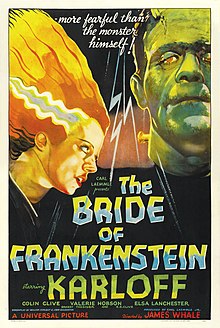The North America Portal

North America is a continent in the Northern and Western Hemispheres. North America is bordered to the north by the Arctic Ocean, to the east by the Atlantic Ocean, to the southeast by South America and the Caribbean Sea, and to the west and south by the Pacific Ocean. The region includes the Bahamas, Bermuda, Canada, the Caribbean, Central America, Clipperton Island, Greenland, Mexico, Saint Pierre and Miquelon, Turks and Caicos Islands, and the United States.
North America covers an area of about 24,709,000 square kilometers (9,540,000 square miles), representing approximately 16.5% of the Earth's land area and 4.8% of its total surface area. It is the third-largest continent by size after Asia and Africa, and the fourth-largest continent by population after Asia, Africa, and Europe. As of 2021[update], North America's population was estimated as over 592 million people in 23 independent states, or about 7.5% of the world's population. In human geography, the terms "North America" and "North American" can refer to Canada, the United States, Mexico, and Greenland or, alternatively, Canada, Greenland and the US (Mexico being classified as part of Latin America) or simply Canada and the US (Greenland being classified as either Arctic or European (due to its political status as a part of Denmark) and Mexico classified as Latin American).
It is unknown with certainty how and when first human populations first reached North America. People were known to live in the Americas at least 20,000 years ago, but various evidence points to possibly earlier dates. The Paleo-Indian period in North America followed the Last Glacial Period, and lasted until about 10,000 years ago when the Archaic period began. The classic stage followed the Archaic period, and lasted from approximately the 6th to 13th centuries. Beginning in 1000 AD, the Norse were the first Europeans to begin exploring and ultimately colonizing areas of North America.
In 1492, the exploratory voyages of Christopher Columbus led to a transatlantic exchange, including migrations of European settlers during the Age of Discovery and the early modern period. Present-day cultural and ethnic patterns reflect interactions between European colonists, indigenous peoples, enslaved Africans, immigrants from Europe, Asia, and descendants of these respective groups. (Full article...)
Bride of Frankenstein is a 1935 American science fiction horror film, and the first sequel to Universal Pictures' 1931 film Frankenstein. As with the first film, Bride of Frankenstein was directed by James Whale starring Boris Karloff as the Monster and Colin Clive as Dr. Frankenstein. The sequel features Elsa Lanchester in the dual role of Mary Shelley and the bride. Colin Clive reprises his role as Henry Frankenstein, and Ernest Thesiger plays the role of Doctor Septimus Pretorius. Oliver Peters Heggie plays the role of the old blind hermit.
Taking place immediately after the events of the earlier film, it is rooted in a subplot of the original Mary Shelley novel, Frankenstein; or, The Modern Prometheus (1818). Its plot follows a chastened Henry Frankenstein as he attempts to abandon his plans to create life, only to be tempted and finally blackmailed by his old mentor Dr. Pretorius, along with threats from the Monster, into constructing a bride for the Monster. (Full article...)
Emily Jean "Emma" Stone (born November 6, 1988) is an American actress and producer. Her accolades include two Academy Awards, two British Academy Film Awards, and two Golden Globe Awards. In 2017, she was the world's highest-paid actress and named by Time magazine as one of the 100 most influential people in the world.
Stone began acting as a child in a theater production of The Wind in the Willows in 2000. As a teenager, she relocated to Los Angeles and made her television debut in In Search of the New Partridge Family (2004), a reality show that produced only an unsold pilot. After small television roles, she appeared in a series of well-received teen comedy films, such as Superbad (2007), Zombieland (2009), and Easy A (2010), which was Stone's first leading role. Following this breakthrough, she starred in the romantic comedy Crazy, Stupid, Love (2011) and the period drama The Help (2011), and gained wider recognition as Gwen Stacy in the 2012 superhero film The Amazing Spider-Man and its 2014 sequel. (Full article...)Glacier National Park is part of a system of 43 parks and park reserves across Canada, and one of seven national parks in British Columbia. Established in 1886, the park encompasses 1,349 km2 (521 sq mi), and includes a portion of the Selkirk Mountains which are part of the larger grouping of mountains, the Columbia Mountains. It also contains the Rogers Pass National Historic Site.
The park's history is closely tied to two primary Canadian transportation routes, the Canadian Pacific Railway (CPR), completed in 1885, and the Trans-Canada Highway, completed in 1963. Rogers Pass in the centre of the park eluded explorers until 1881. The railway brought with it tourism, the establishment of Glacier National Park and the construction of a popular alpine hotel. The heavy winter snows and steep, avalanche-prone valleys of the park have been a major obstacle to transportation, necessitating much railway engineering and avalanche control measures. (Full article...)Did you know...
- ... that Confederate General John W. Frazer surrendered the Cumberland Gap during the American Civil War without a fight?
- ...that a circumferentor (pictured) was an important tool to surveyors for mapping the North American frontier?
- ...that Pico Turquino in the Sierra Maestra mountains is the highest point in Cuba at 6,749 feet?
- ... that Bésame Mucho, a song written in 1940 by Consuelo Velazquez, is according to some sources the most interpreted and performed song of the 20th century?
- ...that Jacob Piatt Dunn in 1886 wrote the first scholarly history concerning the Indian Wars?
Selected panorama

Topics
Categories
List articles
Related portals
Northern America
Central America
Caribbean
WikiProjects
 North America
North America-
 Canada
Canada -
 Greenland
Greenland -
 Mexico
Mexico -
 Saint Pierre and Miquelon
Saint Pierre and Miquelon -
 United States
United States  Central America
Central America-
 Belize
Belize -
 Costa Rica
Costa Rica -
 El Salvador
El Salvador -
 Guatemala
Guatemala -
 Honduras
Honduras -
 Nicaragua
Nicaragua -
 Panama
Panama  Mesoamerica
Mesoamerica Caribbean
Caribbean-
 Antigua and Barbuda
Antigua and Barbuda -
 Bahamas
Bahamas -
 Barbados
Barbados -
 Bermuda
Bermuda -
 Cuba
Cuba -
 Dominica
Dominica -
 Dominican Republic
Dominican Republic -
 Grenada
Grenada -
 Haiti
Haiti -
 Jamaica
Jamaica -
 Puerto Rico
Puerto Rico -
 Saint Kitts and Nevis
Saint Kitts and Nevis -
 Saint Lucia
Saint Lucia -
 Saint Vincent and the Grenadines
Saint Vincent and the Grenadines -
 Trinidad and Tobago
Trinidad and Tobago
Associated Wikimedia
The following Wikimedia Foundation sister projects provide more on this subject:
-
Commons
Free media repository -
Wikibooks
Free textbooks and manuals -
Wikidata
Free knowledge base -
Wikinews
Free-content news -
Wikiquote
Collection of quotations -
Wikisource
Free-content library -
Wikiversity
Free learning tools -
Wikivoyage
Free travel guide -
Wiktionary
Dictionary and thesaurus



























